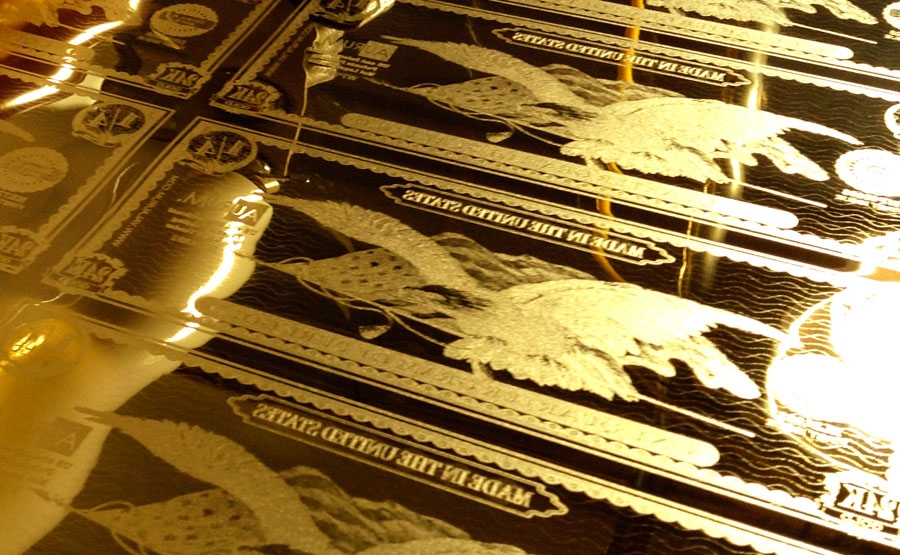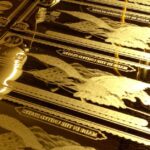Share this article! Adam Trexler has spent the past 10 years steeped in the world of global finance. As a student, researcher and professor at the University of London and the University of Exeter, he studied and taught classes on the relationship between credit markets, monetary policy and local crafts movements. He also experienced personally … Read more
Adam Trexler has spent the past 10 years steeped in the world of global finance. As a student, researcher and professor at the University of London and the University of Exeter, he studied and taught classes on the relationship between credit markets, monetary policy and local crafts movements. He also experienced personally the shock of currency conversion — converting student loan dollars into pounds meant the money he lived on swung as much as 25% in value.
So in 2012 Trexler, 37 and a Maryland native, moved back to the United States and embarked on what some might consider a quintessentially new-meets-old 21st-century business enterprise: harnessing the power of nanotechnology to make tiny amounts of gold.
While he was in England, “I learned firsthand how exchange rates could cripple people,” says Trexler. While abroad he also learned about a novel gold-coating technique developed by Venture Technology, a Grants Pass-based thin films research and development firm.
That technology now drives Valaurum, a partnership between Trexler (president) and Venture Technology. Valaurum makes what Trexler describes as “single servings of gold,” a 24-karat sandwich that layers impossibly small amounts of gold between thin polyester film, creating bills that fit inside a wallet. Latin for gold, the “aurum” contain one-tenth of a gram of the precious metal and sell for $11 each. They are made in a production facility in Syracuse, New York, using a decidedly high-tech process. Sheets of polyester are imprinted with designs, then rolled through a vacuum deposition chamber. Gold bombarded with atoms of argon strikes the film, which is then laminated to create the final product.
Valaurum got its start selling to bullion dealers, traders who buy and sell precious metals. The company launched in the U.S. and Canada, has since expanded abroad and has made a mark in countries with unstable currencies, such as Suriname, where several currencies are in use — and where one company bought 5,000 aurum in early 2015.
So far Valaurum has sold roughly 75,000 bills. It grossed $625,000 in 2015, up 600% from 2014. “We’re like a pimple’s pimple in the gold market, but we’re growing,” says Trexler, adding that the aurum is a unique product with unique marketing challenges. “You know how to market Coke Lite or a T-shirt but there’s no kind of road map, so building this out has been really fascinating.”
To be sure: Gold bars and coins have been standards of wealth for thousands of years. The year 2016 is no different. Year-to-date, investors have poured $7.5 billion into precious metals exchange-traded funds (ETFs), mostly in the gold trade, according to a recent CNN.com article.
But not everyone is sold on Valaurum as a business model. “One of the most important aspects of an asset is its liquidity,” says Jeff Parker, an economics professor at Reed College. “How easy is it for people to sell these pieces? Is there an established market? Investors need convincing answers to these questions before they buy.”
Adam Taggart, president and co-founder of Peak Prosperity, a California-based finance website, is more sanguine. He cites Valaurum’s method as its competitive advantage. “The technology allows [Valaurum] to create the unique ‘dollar bill’ form using tiny, fractional grams of gold — no one else can really do that right now,” says Taggart. The risk comes from copycats, he says. “If other players are able to eventually duplicate the form factor, a lot of the profit-margin potential could get competed away.”
Going forward, Valaurum plans to continue expanding its dealer network and experiment with the process. In February the research team found a way of applying the layering method to larger amounts of gold. Valaurum already runs a customized gold-certificate business and is developing partnerships with companies that produce greeting cards, diplomas, and promotional items.
For Trexler, the author of Anthropocene Fictions, (University of Virginia Press, 2015), a study of the novel in an era of climate change, thinking globally and outside the box is par for the course. His long-term goal is to democratize gold by making small amounts of the precious metal more accessible. But he also understands his product might seem odd in an era known more for Bitcoin than the gold standard.
“These days most startups are software or virtual things and we’re doing something in this kind of weird physical space,” Trexler says. “Not everybody wants gold, but I’ve never met anybody who will turn it away.”




